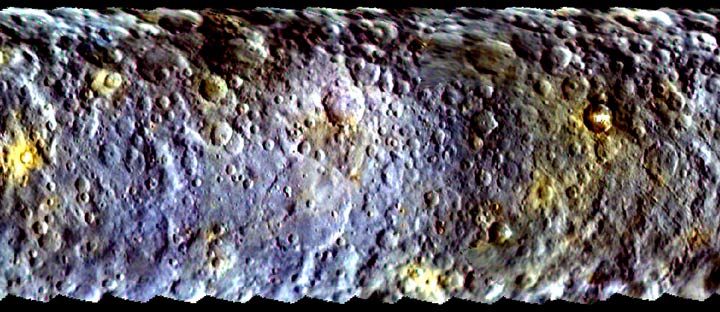A new color map of dwarf planet Ceres, which NASA’s Dawn spacecraft has been orbiting since March, reveals the diversity of the surface of this planetary body. Differences in morphology and color across the surface suggest Ceres was once an active body, Dawn researchers said today at the 2015 General Assembly of the European Geosciences Union in Vienna.
“This dwarf planet was not just an inert rock throughout its history. It was active, with processes that resulted in different materials in different regions. We are beginning to capture that diversity in our color images,” said Chris Russell, principal investigator for the Dawn mission, based at the University of California, Los Angeles.
The Dawn mission made history on March 6 as the first spacecraft to reach a dwarf planet, and the first spacecraft to orbit two extraterrestrial targets. Previously, Dawn studied giant asteroid Vesta from 2011 to 2012, uncovering numerous insights about its geology and history. While Vesta is a dry body, Ceres is believed to be 25 percent water ice by mass. By comparing Vesta and Ceres, scientists hope to gain a better understanding of the formation of the solar system.
Ceres’ surface is heavily cratered, as expected, but appears to have fewer large craters than scientists anticipated. It also has a pair of very bright neighboring spots in its northern hemisphere. More detail will emerge after the spacecraft begins its first intensive science phase on April 23, from a distance of 8,400 miles (13,500 kilometers) from the surface, said Martin Hoffmann, investigator on the Dawn framing camera team, based at the Max Planck Institute for Solar System Research, Göttingen, Germany.
